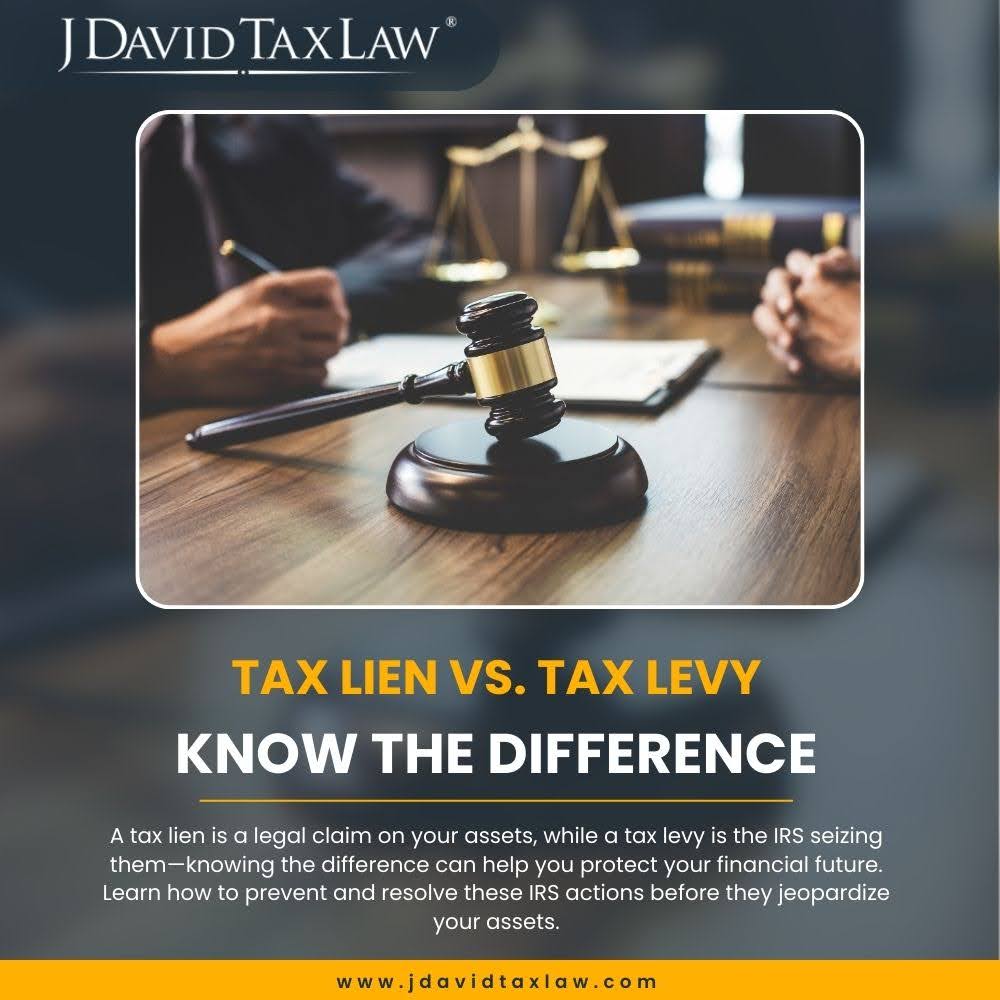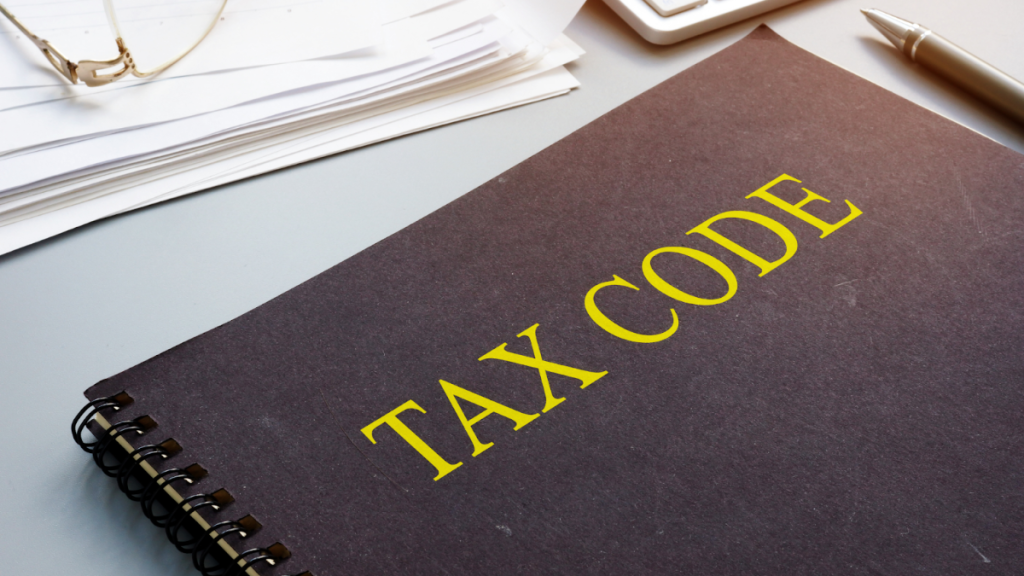Tax Lien vs. Tax Levy: Why Knowing the Difference Can Save Your Assets
Dealing with taxes requires you to understand the terminology and procedures that can impact your financial health.
Among the most important concepts to grasp are tax liens and tax levies. These terms might seem interchangeable, but they represent different actions the IRS can take to collect unpaid taxes.
Knowing the difference between these two critical terms can mean the difference between financial stability and hardship. Read on as we outline their key differences and provide you with the knowledge to protect your assets.
What is a Tax Lien?
A tax lien is a legal claim by the government against your property when you fail to pay a tax debt.
It’s essentially the government’s way of securing its interest in your assets to ensure payment for the taxes you owe. This lien attaches to all your assets, specifically financial accounts. In most cases, it can extend to future assets acquired during the duration of the lien.
Here are some of the common causes of tax lien:
Failure to pay personal income taxes.
Unpaid business taxes, such as payroll taxes.
How a Tax Lien is Placed on Your Assets
The process begins when you fail to pay your taxes after the IRS has assessed your liability and sent you a bill that you neglected to pay. The IRS will then send you a Notice and Demand for Payment.
If you still do not pay the tax, the IRS will file a public document called a Notice of Federal Tax Lien. This alerts creditors that the government has a legal right to your assets. This notice can significantly impact your financial standing and credit rating.
Impact of a Tax Lien on Credit Scores and Asset Ownership
A tax lien generally can have a severe impact on your credit score. It appears on your credit report as a public record and can lower your credit score by several points. Thus, making it more challenging to obtain loans or credit cards.
In addition, it can complicate the sale or refinancing of any assets. For example, in real estate, the lien must be satisfied before the property can be transferred.
5 Steps to Address a Tax Lien
1. Review the Lien Notice
Carefully read the Notice of Federal Tax Lien to understand the amount you owe, the tax periods involved, and the steps you need to take. The notice provides important information about the lien and your rights.
2. Consult a Tax Professional
Seek assistance from a J. David Tax Law attorney to discuss your situation and explore your options. They can help you understand the implications of the lien and develop a strategy to resolve it.
Here are some payment plans you can consider:
Pay the Debt in Full
Installment Agreement
Offer in Compromise
3. Request a Lien Withdrawal or Discharge
If the lien was filed in error, you can request a lien withdrawal. This removes the public Notice of Federal Tax Lien and ensures that it is no longer a matter of public record.
But if you are selling an asset subject to a lien, you can request a lien discharge. A lien discharge removes the lien allowing the sale to proceed.
4. Appeal the Lien
If you believe the lien was filed in error or disagree with the amount owed, you have the right to appeal. File a Collection Due Process (CDP) request within 30 days of receiving the lien notice to request a hearing with the IRS Office of Appeals. During the hearing, you can present your case and seek a resolution.
5. Monitor Your Credit Report
A tax lien can significantly impact your credit score. Once the lien is resolved, ensure that the lien release is reflected on your credit report. This can help improve your credit score and make it easier to secure loans or credit in the future.
What is a Tax Levy?
A tax levy is a legal seizure of your asset to satisfy a tax debt. Unlike a tax lien, a tax levy directly takes your assets to fulfill the unpaid taxes. Some of the assets the IRS can levy include bank accounts, wages, social security benefits, and even personal properties.
Listed below are the situations where a tax levy can occur:
Ignoring or neglecting multiple IRS notices and demands for payment.
Failing to respond to or resolve a tax lien.
Accumulating substantial tax debts without making efforts to pay them.
How a Tax Levy is Placed on Your Assets
Before the IRS can levy your assets, they must first send you a series of notices. The process typically begins with…
a Notice and Demand for Payment,
followed by a Final Notice of Intent to Levy and
Notice of Your Right to a Hearing.
This final notice is usually sent at least 30 days before the levy is enacted. This will give you the last chance to settle the debt or appeal the levy.
If no resolution is reached within the 30-day period, the IRS proceeds with the levy. They can freeze funds in your bank accounts, garnish your wages, and seize other assets.
Immediate Impacts of a Tax Levy on Assets and Finances
When the IRS levies your bank account, it freezes the funds for 21 days before transferring them to the IRS. This gives you a short window to resolve the issue.
Wage garnishments continue until the tax debt is fully paid or arrangements are made. In addition, the IRS can seize and sell your assets at auction prices lower than market value.
5 Steps to Address a Tax Levy
1. Immediate Actions Upon Receiving a Levy Notice
When you receive a Final Notice of Intent to Levy, you must act quickly. This notice informs you of the IRS’s intention to seize your assets and your right to a hearing. Understand the specifics of the levy, including the amount owed and the assets at risk.
2. Contact the IRS
Call the IRS immediately to discuss your situation. Explain any circumstances that may have led to the tax debt and express your willingness to resolve the issue.
If you disagree with the levy or need more time to pay, request a CDP hearing. This request must be made within 30 days of the levy notice. During the hearing, you can present your case and explore alternatives to the levy.
3. Seek Professional Assistance
Consider hiring a tax attorney. They can provide legal advice, represent you in hearings, and help you understand your rights and options.
Full Payment
Installment Agreement
Offer in Compromise
4. Request a Levy Release
If the levy is r preventing you from meeting basic living expenses, you can request a levy release. To support your request, provide documentation of you income, expenses, and assets.
5. Appeal the Levy
If you believe the levy is unjustified or the amount is incorrect, you have the right to appeal. File a Collection Appeal Request (Form 9423) to appeal the levy action. An independent IRS office will review your case and may suspend the levy while your appeal is considered.
Overview of the Key Difference Between Tax Lien and Levy:
Aspect | Tax Lien | Tax Levy |
Nature | Legal claim against assets | Actual seizure of assets |
Procedure | Notice and Demand for Payment, Notice of Lien | Notice and Demand for Payment, Final Notice |
Impact on Assets | Attaches to all assets, affects credit | Seizes assets directly, immediate financial impact |
Credit Impact | Significant, might appear on credit report | Indirect, due to loss of assets |
Duration | Until the debt is paid or the lien is withdrawn | Until the debt is paid or the levy is lifted |
Removal | Payment, withdrawal, or discharge | Payment, agreement, offer in compromise, or appeal |
Conclusion
Taking the time to educate yourself about tax liens and levies can pay off in the long run. It helps you navigate the complexities of tax enforcement actions and ensures that you are prepared to protect your financial health.
Here at J. David Tax Law, we understand the stress and uncertainty that tax liens and levies can cause. We offer personalized advice and representation to ensure your rights are protected and your financial future is secure.
Call us at (888) 342-9436 to schedule your consultation and take the first step to protect your assets.
Your Tax Relief Questions, Answered















